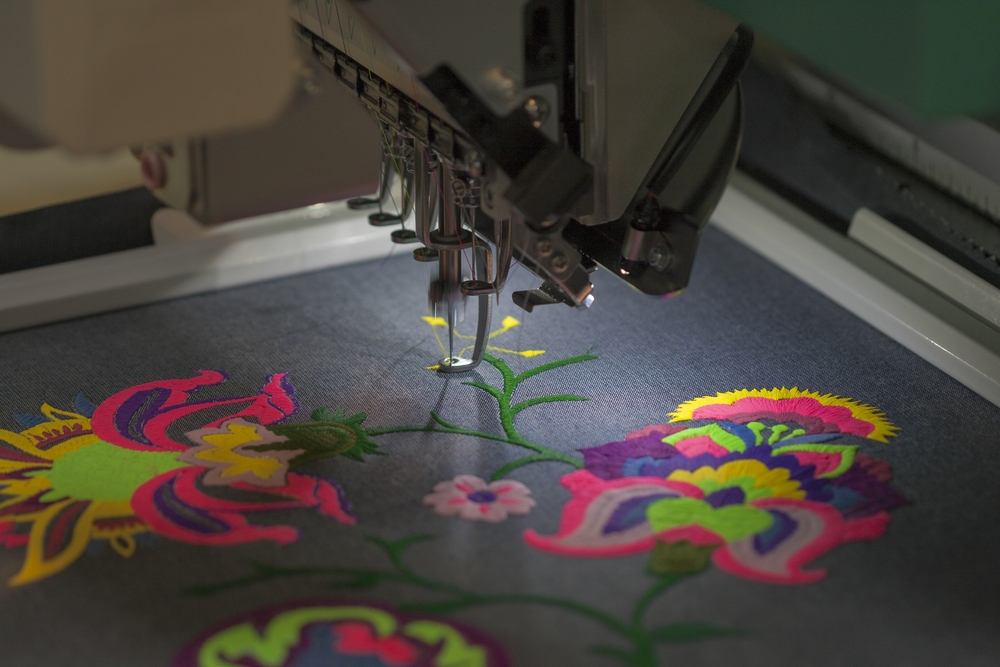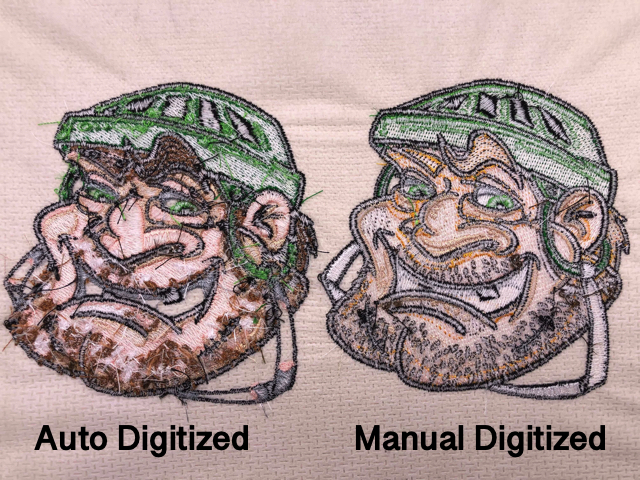Efficient Digitizing for Embroidery: Quick Turn-around
Efficient Digitizing for Embroidery: Quick Turn-around
Blog Article
Grasping the Embroidery Digitizing Process: Your Ultimate Guide
Embroidery digitizing is a meticulous craft that calls for precision and experience to translate elaborate styles right into electronic formats for maker needlework. As craftsmens begin on this journey to understand the embroidery digitizing process, a detailed understanding of the fundamentals establishes the structure for excellence.

Comprehending Needlework Digitizing Fundamentals
Needlework digitizing essentials create the structure upon which elaborate layouts are converted into machine-readable layouts for accurate stitching. This preliminary step in the embroidery digitizing procedure is important for making certain that the last stitched product is a faithful depiction of the initial design. Understanding needlework digitizing essentials entails realizing key principles such as stitch types, sew direction, density, underlay, and draw settlement.
Stitch types play a crucial function in establishing the visual and textural end result of the stitched layout. By picking the proper stitch type, whether it be satin, fill, or running stitch, digitizers can accomplish the preferred effect and enhance the overall quality of the needlework. Additionally, stitch direction affects the flow and measurement of the design, while density identifies the spacing and protection of the stitches.
In addition, padding sewing offers security to the style by safeguarding the material and avoiding distortion throughout the embroidery procedure. Draw settlement is another important factor to consider to combat the natural tendency of fabric to contract when stitched. Mastering these embroidery digitizing basics is basic for producing professional-quality stitched products.
Choosing the Right Digitizing Software Application
Choosing the appropriate digitizing software is an essential choice that substantially affects the effectiveness and quality of the needlework digitizing procedure. Digitizing for Embroidery. When choosing the appropriate digitizing software application, it is necessary to think about factors such as the intricacy of layouts you plan to develop, the user-friendliness of the software application, the level of client assistance provided, and the compatibility with your embroidery maker
There are numerous digitizing software choices available in the market, ranging from standard programs for newbies to sophisticated software application for specialist digitizers. Some popular choices consist of Wilcom EmbroideryStudio, Hatch Embroidery Software, and PulseID. These software offer a large range of devices and attributes to help you create complex designs effortlessly.
Prior to deciding, it is suggested to explore the different software application options with cost-free trials or trials to determine which one ideal suits your needs. Additionally, checking out testimonials and seeking recommendations from experienced digitizers can supply important insights right into the strengths and weak points of each software (Digitizing for Embroidery). By meticulously assessing your demands and contrasting the features of various digitizing software application, you can make an informed option that improves your needlework digitizing workflow
Digitizing Devices and Strategies

Optimizing Style Setup for Needlework
Understanding the ins and outs of design setups is fundamental in attaining optimum cause the embroidery digitizing procedure, view it now building upon the foundation laid by understanding digitizing devices and strategies. When maximizing design settings for needlework, it is important to think about aspects such as stitch type, density, underlay, draw payment, and registration. Sew type selection influences the total look of the style, with alternatives like satin, fill, and running stitches providing different appearances and effects. Density refers to the spacing and thickness of stitches, affecting the design's protection and longevity. Proper rug stitching provides security and avoids material distortion, particularly for intricate styles or on elastic products. Pull compensation adjusts for textile stretch throughout sewing, making sure exact layout duplication. Enrollment settings line up various aspects of the design precisely, keeping overall style stability. By fine-tuning these style settings, embroiderers can enhance the top quality this page and precision of their embroidered developments.

Troubleshooting Common Digitizing Issues
When encountering common digitizing concerns throughout the embroidery process, it is necessary to comprehend the origin triggers and execute reliable solutions immediately. One usual issue is stitch thickness issues, where stitches might be too dense, triggering the textile to tighten, or too thin, resulting in gaps in the design. Changing the stitch density setups in the digitizing software can aid resolve this problem.
Another constant obstacle is string breaks during the embroidery process. This can happen as a result of numerous factors such as inaccurate tension settings, dull needles, or utilizing low-grade thread. Ensuring correct upkeep of the needlework device, including regular check here needle modifications and tension adjustments, can reduce the event of string breaks.
In addition, layout registration mistakes can result in misaligned aspects within the embroidery layout. Inspecting the style placement in the digitizing software program and making necessary changes prior to stitching can help in preventing this concern. By dealing with these usual digitizing issues quickly and properly, you can ensure a smoother embroidery process and top notch completed products.
Verdict
In verdict, grasping the embroidery digitizing procedure requires a strong understanding of the essentials, the best selection of software application, and knowledge of devices and strategies. Enhancing layout settings and fixing usual digitizing issues are critical actions in ensuring high-grade embroidery outcomes. By complying with these actions carefully, one can attain accuracy and efficiency in the digitizing process.
Report this page